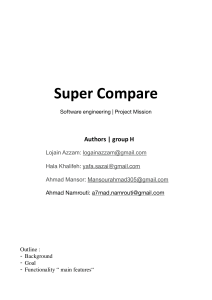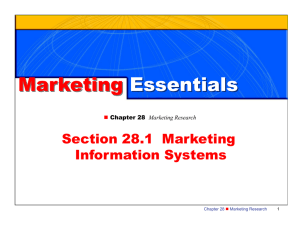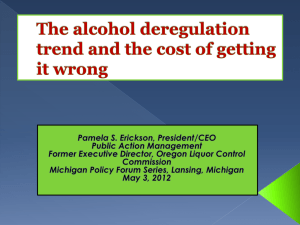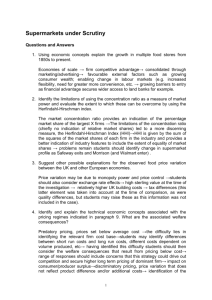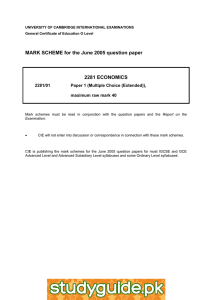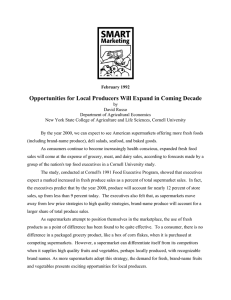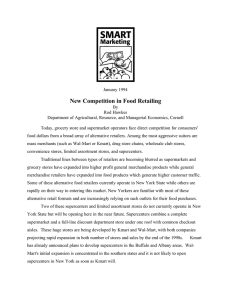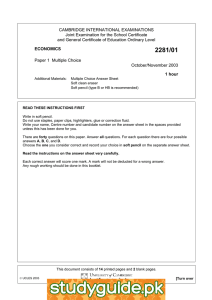Document 10704833
advertisement
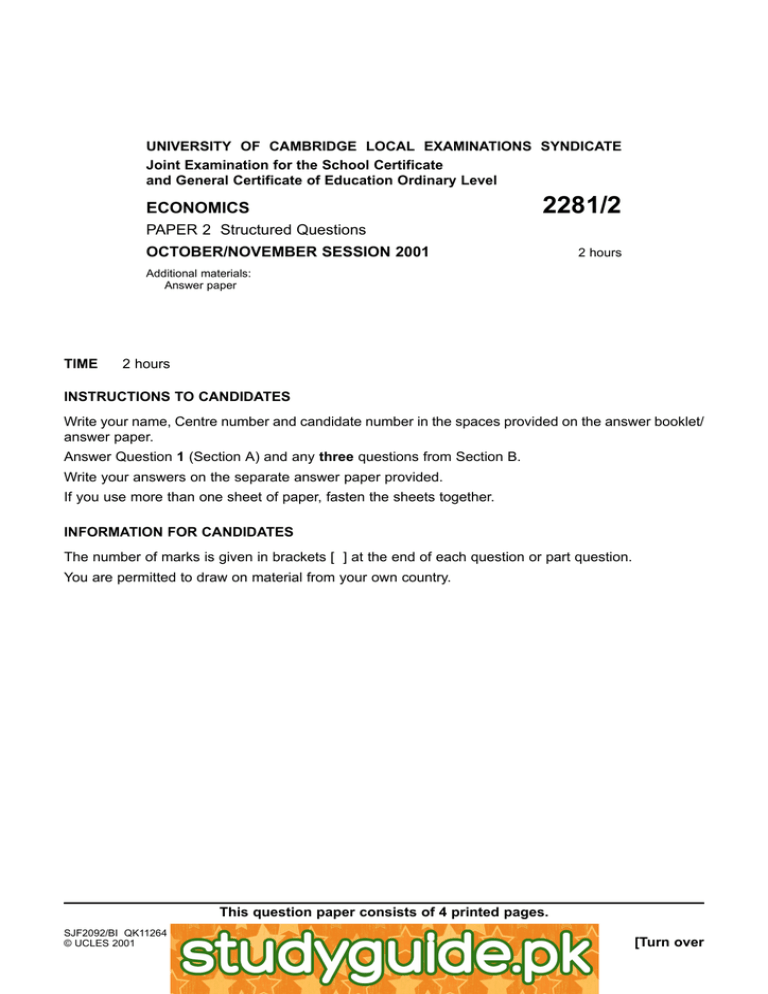
UNIVERSITY OF CAMBRIDGE LOCAL EXAMINATIONS SYNDICATE Joint Examination for the School Certificate and General Certificate of Education Ordinary Level ECONOMICS 2281/2 PAPER 2 Structured Questions OCTOBER/NOVEMBER SESSION 2001 2 hours Additional materials: Answer paper TIME 2 hours INSTRUCTIONS TO CANDIDATES Write your name, Centre number and candidate number in the spaces provided on the answer booklet/ answer paper. Answer Question 1 (Section A) and any three questions from Section B. Write your answers on the separate answer paper provided. If you use more than one sheet of paper, fasten the sheets together. INFORMATION FOR CANDIDATES The number of marks is given in brackets [ ] at the end of each question or part question. You are permitted to draw on material from your own country. This question paper consists of 4 printed pages. SJF2092/BI QK11264 © UCLES 2001 http://www.xtremepapers.net [Turn over 2 Section A Answer this question. 1 The chart shows the total gold production costs for South African Gold Mines in May 1999. These include the costs of capital expenditure, which analysts say provide a reliable indicator of the industry’s condition. Mine Total costs including capital expenditure Anglogold 216 Avgold 308 Durban Deep 281 Gold Fields Ltd 247 Harmony 289 Kalgold 225 Randfontein 287 St Helena 267 Western Areas 521 0 100 200 300 400 US$ per ounce 500 600 The price fixed for international trade in gold had recently fallen by $12 to $274 an ounce. At this price production costs in five of the country’s mines were higher than the price of gold. A spokesman said ‘if gold prices stay at this level I would not be surprised if 10% of gold production was closed down over six months or less’. (a) (i) Identify the four mines which still made a profit despite the fall in the international gold price. [2] (ii) What was the total number of mines that would have made a profit before the price fell by $12? [1] (b) If five of the nine mines no longer made a profit, why do you think the spokesman said that only 10% of gold production would be closed down within six months? [3] (c) Explain what is meant by capital expenditure, using an example that might be found in the mining industry. [3] (d) Gold is an important product for the South African economy. Explain what might have happened if the price of gold remained at $274 an ounce: (i) to employment levels in the industry, [4] (ii) to the economy as a whole. [7] 2281/2/O/N/01 3 Section B Answer any three questions. 2 In the last ten years many countries have introduced policies that increased the role of the market system. (a) Explain the most important features of ‘the market system’. [4] (b) Explain, with the use of diagram, what will happen in a market system if a good becomes popular and there is a fall in the cost of production. [6] (c) What are the advantages and disadvantages of relying more on the market system? 3 [10] (a) Explain why some people prefer to keep money in cash and current accounts in banks even though other accounts earn more interest. [5] (b) What are likely to be the differences in spending and saving patterns between high income earners and low income earners? [5] (c) What determines why some people earn more than other people? 4 [10] (a) Using examples, define and distinguish between an invisible export and a visible export. [4] (b) Why are governments interested in the balance of payments? [6] (c) In 1998 the current account of India was in deficit. In 1999 the value of exports from India was less than in 1998. Discuss whether these facts were likely to be a source of concern for the Indian government. [5] (d) The value of exports might be affected by changes in a country’s exchange rates. Discuss why exchange rates fluctuate. [5] 5 In Egypt, a developing country, population growth of around 2% each year increases the overcrowding in cities. 12% of the population live in Cairo, the most densely populated city in Africa. (a) Identify the factors that determine the population growth in a country. [3] (b) Explain what is meant by a developing country. [7] (c) Explain what differences there are likely to be between the population structure found in a developing country and that found in a developed country. [5] (d) Consider whether the problems faced by a developing country from overcrowding in cities are similar to those found in a developed country. [5] 2281/2/O/N/01 [Turn over 4 6 In many cities large supermarkets are being built. Supermarkets provide car parks for their customers and sell many goods at low prices. As a result traders in small local shops fear they will lose customers. (a) Supermarkets are likely to have higher fixed costs than small shops. Define fixed costs and give two examples of fixed costs likely to be found in a supermarket. [4] (b) Discuss how a supermarket can sell many products at very low prices, despite the higher fixed costs. [6] (c) Suggest three reasons why consumers prefer to shop at large supermarkets. [3] (d) Despite the growth of supermarkets small shops and businesses still exist. Why is this? [7] 7 Some services, such as legal advice, are provided by private individuals while others, such as the police force, are provided by the public sector. (a) What is meant by the public sector? [4] (b) Discuss why the public sector should provide a good or service. (c) In what ways may the provision of goods and services in the public sector be paid for? 2281/2/O/N/01 [10] [6]
